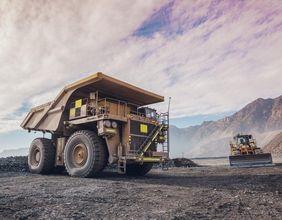The museum structure, which originally served as the campus laundry facility, was converted to a museum space in 1941 and later designated as part of the Tuskegee Institute National Historic Site. The building is associated with George Washington Carver, who was a faculty member at Tuskegee for several decades and is recognized for his contributions to agriculture, education, and applied science. The project, completed by Caldwell’s Roofing in early 2025, required an old-school roofing technique.
The Legacy of Flat-Lock Copper Roofing
Copper has been used in roofing for centuries due to its durability and weather-resistant properties. Historical examples of copper roofs can be found throughout Europe, with some installations exceeding 300 years in service life. Over time, copper develops a protective patina that helps prevent further corrosion, contributing to its long lifespan. Because of this longevity, copper has been considered a practical roofing material for certain building types, particularly where replacement costs or aesthetic considerations make long-term performance important.
In the United States, copper became common in the 19th and early 20th centuries for low-slope roofs, cupolas, domes, and civic structures. Among the techniques used, flat-lock copper roofing became a well-established method for waterproofing nearly flat surfaces. The system consists of small, interlocking copper panels—often around 18 by 24 inches—with opposite edges bent to form “locks.” These panels are installed in a staggered layout, and copper cleats (hidden fastening clips) are used to anchor the system to the roof deck. This approach accommodates natural expansion and contraction while minimizing the risk of stress cracks. Once assembled, the seams are typically hammered flat and soldered to create a continuous, watertight surface.
Flat-lock copper roofing can be used on both vertical and low-slope applications. On vertical walls or steep slopes, some installations are left unsoldered and rely on overlapping seams to shed water. However, for low-slope conditions—commonly defined as pitches of 3:12 or less—fully soldered seams are required to prevent water infiltration.
Craftsmanship: Traditional and Contemporary Approaches
A defining feature of flat-lock copper systems on low-slope roofs is the soldered seam. After the interlocking panels are laid out and secured, the seams are cleaned, treated with flux, and filled with molten solder—commonly a 50/50 lead-tin alloy. When applied correctly, the solder bonds the copper panels into a sealed, continuous surface. This process requires careful temperature control and experience, particularly to avoid damaging adjacent materials or compromising the seal.
Historically, roofers used large, hand-held soldering irons—sometimes called soldering coppers—that were heated with a fire pot or torch. These irons retain and release heat in a more controlled manner than open flames, allowing consistent soldering across panel seams. Some modern installations continue to use this method, often with propane-heated irons. The indirect heat reduces the chance of scorching the copper or igniting flammable materials beneath the roof deck.
Modern Alternatives
Flat-lock copper roofing is not the only option for low-slope roofs. Materials such as TPO (thermoplastic polyolefin) and PVC (polyvinyl chloride) membranes are also widely used. These systems are compatible with slopes below 1:12 and do not require soldering. In addition, they use materials without lead content and have lower risks of heat-related installation hazards. While copper remains a relevant choice for historic preservation projects, membrane roofing provides a cost-effective and lower-maintenance alternative for new construction or modern renovations.
Brad Caldwell
Caldwell Contracting LLC
+1 334-332-7799
email us here
Visit us on social media:
LinkedIn
Instagram
Facebook
YouTube
X
Legal Disclaimer:
EIN Presswire provides this news content "as is" without warranty of any kind. We do not accept any responsibility or liability for the accuracy, content, images, videos, licenses, completeness, legality, or reliability of the information contained in this article. If you have any complaints or copyright issues related to this article, kindly contact the author above.
![]()



_06_25_2025_01_23_32_050916.jpg)


